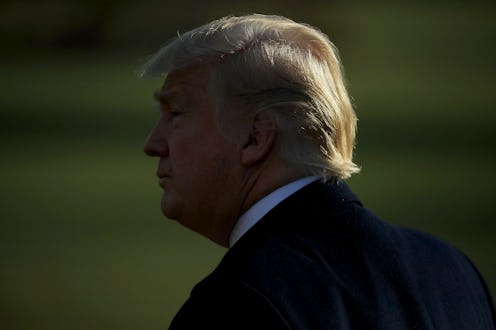News
Everything You Need To Know About What Just Happened To CHIP

Days after Republicans managed to pass sweeping tax reform legislation and are still trying to figure out how to keep a government shutdown at bay, some of the country's most vulnerable people — children — could be most impacted by pivotal changes in health care policy. Children's Health Insurance Program or CHIP provides coverage for 9 million American kids and Congress voted to pass an emergency spending bill on Thursday night in order to avert a government shutdown. Funding for CHIP will only be extended through March, however, and the program could be shuttered by the states, resulting in millions of children losing coverage.
CHIP was first launched in 1997 and provides basic health insurance coverage to millions of children whose families make too much money to qualify for Medicaid, but not enough to afford private insurance. The program relies on bloc grants, meaning the federal government has to allot a certain portion of the budget to local governments to fund CHIP. Congress devotes $14 billion in federal funds to CHIP every year, insuring that nine million low-income children have health insurance.
The program has rare bipartisan support, but Congress failed to renew it back in September and Democrats and Republicans disagree largely on how to pay for it. On Wednesday night, the House released a spending bill that attached CHIP funding of $2.85 billion, keeping the program afloat until at least March 31, 2018. Republicans are proposing that funding for CHIP should come from Medicare and the Affordable Care Act, a move highly criticized by congressional Democrats who feel conflicted on whether or not to vote for a bill that will fund CHIP but also harm programs pivotal to Obamacare in the process.
CHIP provides services, including checkups, immunizations, prescriptions, dental care, surgeries, and emergency services to low-income children. The uninsured rate among children was also reduced, in large part to CHIP, from 14 percent in 1997 to 4.5 percent in 2015.
Although Congress passed the stopgap spending bill to avoid having CHIP being shut down entirely, the funding might still not be enough to keep the program afloat. The short-term funding fix is only extended through March and the $2.85 billion provided is less than the five years of funds that Congress had promised in the past, according to The New York Times.
Last week, states began telling parents that their children could lose coverage if Congress did not adequately fund CHIP in the incoming months. Alabama said earlier this week that it would stop enrolling children on Jan. 1 and would terminate all coverage for all children at the end of January if there weren't enough federal funds to keep the programs running. Likewise, Colorado, Utah, and Oklahoma also warned that coverage could be reduced in the next few months. In other states that don't end coverage, 5.2 million kids could continue to be insured but their families would have to cover more of the cost themselves, according to the Medicaid and CHIP Payment and Access Commission.
“I do not think this is anywhere close to enough money,” said Bruce Lesley, the president of First Focus, a child advocacy group told The New York Times. “For a $12 billion to $14 billion program, this provides less than $3 billion for what is effectively six months."
Although the emergency spending bill provided much-needed funds for CHIP, Congress members have indicated that a more permanent spending bill might not be voted on until 2018. While it's reassuring that the health care coverage for millions of low-income children will be protected into the new year, a more long-term funding agreement has yet to be reached.